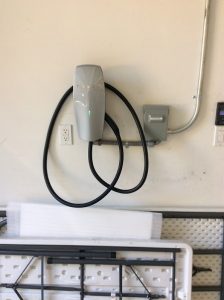 Electric cars are clearly the latest and most sought after development in the automotive industry and Tesla is leading the pack. So, when you have just purchased your very own green car, you can leap for joy about avoiding fueling costs and several other issues that come with it.
Electric cars are clearly the latest and most sought after development in the automotive industry and Tesla is leading the pack. So, when you have just purchased your very own green car, you can leap for joy about avoiding fueling costs and several other issues that come with it.
However, you still have to figure out charging your Tesla.
The amperage of your Tesla charger can play a vital role in determining how much total charge or miles of driving you get. Here’s the breakdown of amps per charger level.
You might be familiar with using a level one charger, which is the common 120V outlet in your home. This works with the portable EVSE (UMC) that comes with the car and gives an amperage of 15-20 amps. As far as miles go, you will replenish 3-4 miles per hour. While the charge time may be slow, this works fine for many Tesla drivers.
The level 2 charge is a 240V outlet installed by a professional electrician as a dedicated home EVSE. It has the capacity to power tough power-hungry machines like your dryer. This charge is more powerful than the previous option and delivers on up to 80 amps. This translates to anywhere between 9-52 miles of Tesla range per hour charging.
Level 3 charge, which is hardly an option for homes and private buildings, is an ultra-fast, ultra high-power 480V circuit. They are superchargers often found at charging stations and account for why it’s sometimes faster to use a public charging station than a home charger. It delivers on up to 300 amps, which is up to 170 miles per hour of Tesla charging.
When you look at the spread, you find that you do have a few suitable options. What you choose depends on your driving habits and miles. To install a level 2 charge be sure to contact a professional electrician or Tesla charger installer.




